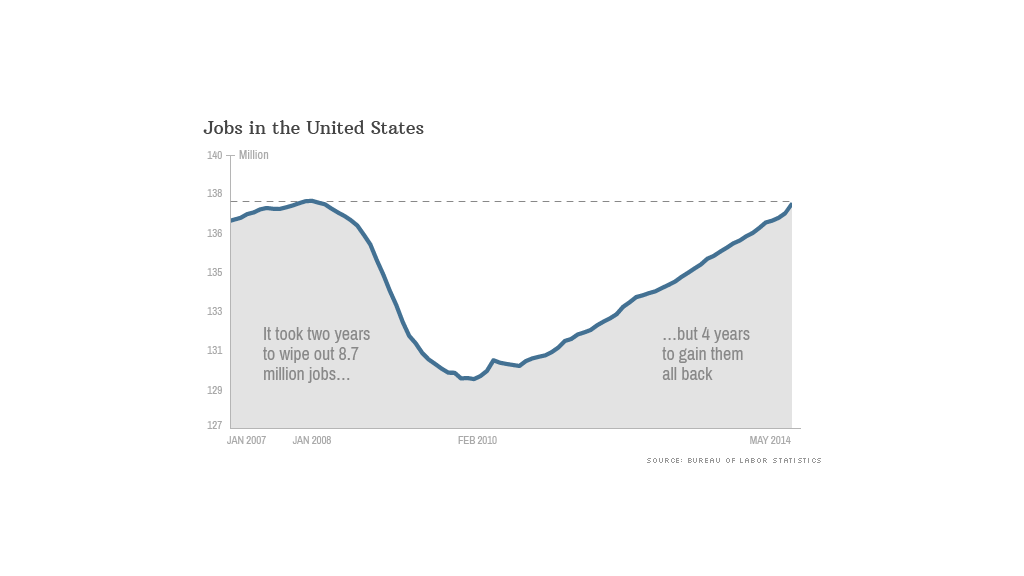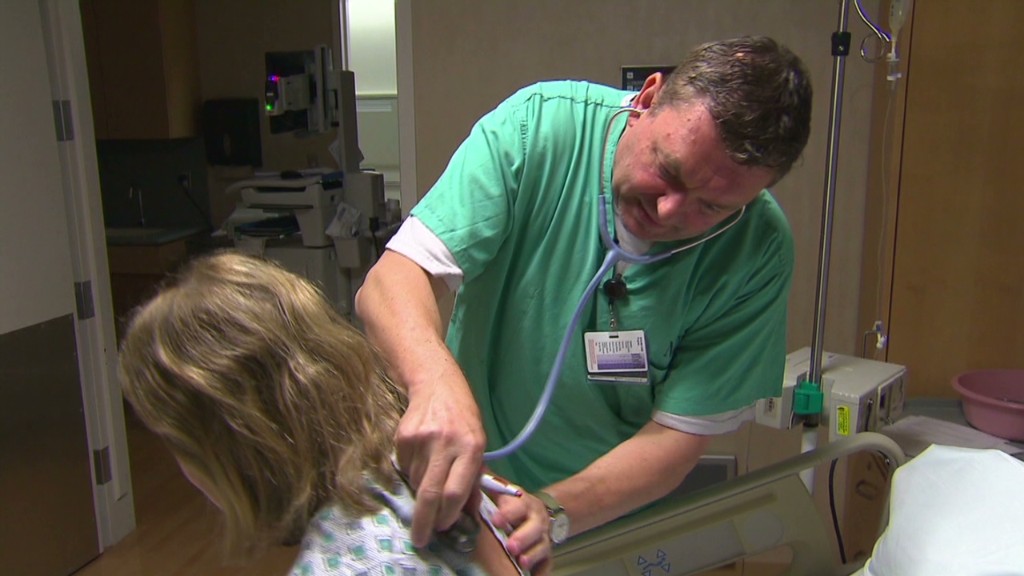
It took two years to wipe out 8.7 million American jobs but more than four years to gain them all back.
That's according to the Department of Labor's latest jobs report, which shows the U.S. economy added 217,000 jobs in May. With that job growth, there are now more jobs in the country than ever before.
The last time we were near this point was January 2008, just before massive layoffs swept throughout the country, leading the unemployment rate to spike to 10%. The unemployment rate is unchanged at 6.3% for May, and much has improved since the worst of the crisis.
Related: Happy to have a #newjob
Yet, this isn't the moment to break out the champagne. Given population growth over the last four years, the economy still needs more jobs to truly return to a healthy place. How many more? A whopping 7 million, calculates Heidi Shierholz, an economist with the Economic Policy Institute.
President Obama's administration was quick to point out that the recovery is still incomplete by their standards.
"We're moving in the right direction, but we have a lot more work to do," said Secretary of Labor Tom Perez. "There are way too many people who are still on the sidelines."
As of May, about 3.4 million Americans had been unemployed for six months or more, and 7.3 million were stuck in part-time jobs although they wanted to work full-time. Both these numbers are still elevated compared to historic norms, and are of concern to Federal Reserve officials, who will meet in two weeks to re-evaluate their stimulus policies.
Overall, this has been the longest jobs recovery since the Department of Labor started tracking jobs data in 1939. Economists surveyed by CNNMoney predict it will take two to three more years to return to "full employment," which they define as an unemployment rate around 5.5%.
Related: The American Dream is out of reach

These jobs are still missing: The jobs that have been created over the last few years are not necessarily the same ones that were lost. Blue-collar jobs in manufacturing and construction accounted for about half of all the positions lost in the crisis, and they've been painfully slow to return.
States that were hardest hit by the housing bust, like Nevada and Arizona, have had the slowest comebacks and still haven't fully recouped all the jobs they lost.
These are the jobs we've gained: States like North Dakota and Texas have come out well ahead of the pack. North Dakota has 30% more jobs now than it did in early 2008, and Texas has 9% more jobs than it did back then.
Nationwide, industries like health care, professional services and leisure and hospitality have not only recovered, but are at all-time highs for jobs. Whereas low-wage jobs dominated the first part of the recovery, now middle wage jobs appear to be growing as well.
Related: The economic recovery in 17 charts
Justin Hirsch, president of JobPlex, specializes in recruiting mid-level managers and young executives for companies like Microsoft, Amazon and Facebook. Over the last year, he's seen an increase in top companies looking for human resources managers -- which could be a good sign of more job growth to come.
"The labor market, from our perspective, seems to be improving," he said. "If anything, corporations are very hungry for great talent."

New grads from the class of 2014 may face a better job market, but they'll also be competing against workers whose careers have taken a detour over the last few years.
"Will employers have the patience for the individual who had to disrupt their career path over the last few years? Or will they just go back to hiring fresh grads?" said Rich Thompson, chief human resources officer, for Adecco Group North America. "It's going to be really interesting to see."






